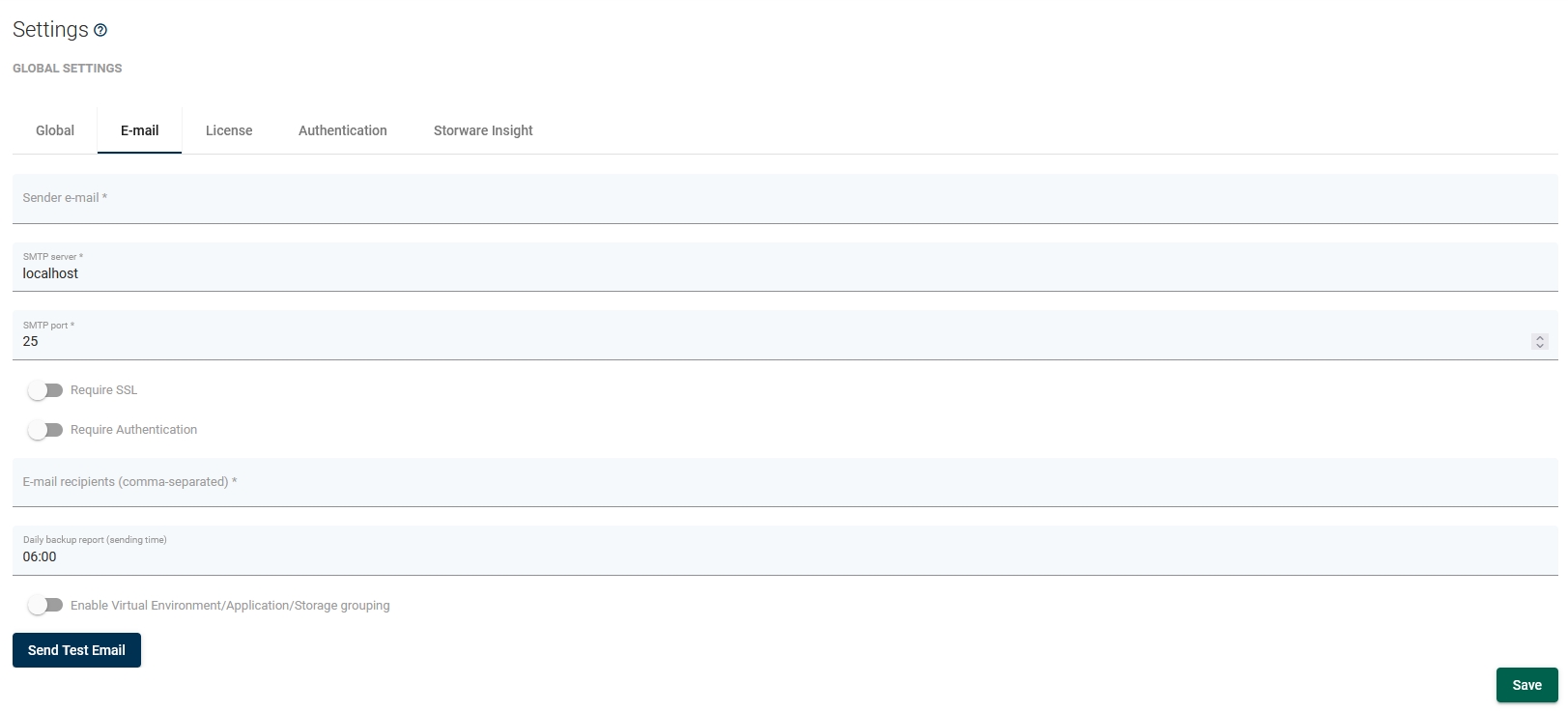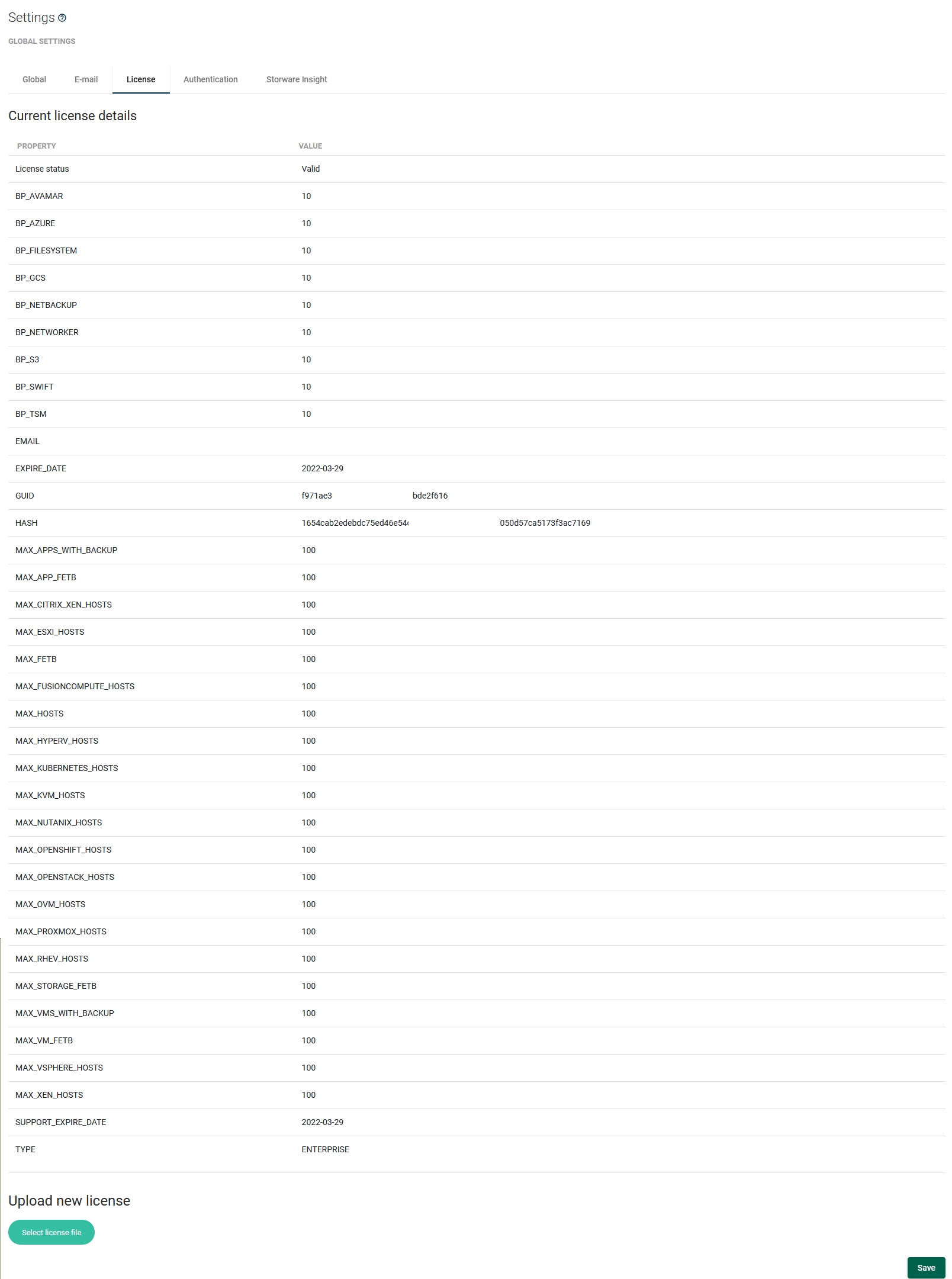Global Settings
Global
Global value settings for some retentions and schedules:

Node status update interval- how often nodes should update their statusBackup history retention- how long should the history of backups be kept (even removed from backup provider)Task retention (in console)- how long finished/failed tasks should be kept in the console in UI/CLIPeriodic inventory synchronizarion interval- how oftenStorware Backup & Recovery should scan for changes in VM inventory on HV/HVMs and Microsoft 365 users accounts, sites, and teamsOld backups removal time- time, when daily backup destination cleanup should be invoked (for all backup destinations)Old snapshots removal time- time, when daily snapshots cleanup should be invoked (for all VMs with any policy assigned)Session timeout [min]- Session timeout [min] - the time after which you will be logged out of the WebUIDefault paging size- Default value of items shown on listsFormat time- you can choose between 12h and 24h time format
E-mail
Email configuration for reports purposes

Sender e-mail- address from which should e-mail be sentSMTP server- SMTP server addressSMTP port- SMTP server portSMTP SSL port- SMTP SSL port (if enabled)SMTP user- SMTP account used to send e-mailsE-mail recipients (comma-separated)- list of recipients of daily backup reportDaily backup report (sending time)- a time when a daily backup report should be sentDaily backup report- sending time for summary reportEnable virtual environment/application grouping- you can group the environment by selected parameter
License
This section enables you to view the current license status and upload a new license if necessary.

License details:
MAX_xxx_HOSTS- maximum number of hosts for a given platformBP_xxx- maximum number of backup destinations per backup provider typeEXPIRE_DATE- trial period expiration date
Authentication
This section enables you to set up single sign-on between Keycloak or LDAP, and product. This section assume you have installed and are using Keycloak or LDAP.
In each of the configurations, you can select a group to which the user will be automatically assigned.
Keycloak
Server URL- Keycloak server URL (if you want to use fqdn of server url you need to use DNS on Server machine or add line in/etc/hosts, in example: '1.2.3.4 dc.fqdn.address')Realm- Name of the realm configured in KeycloakResource- Name of the client configured in keycloakSecret(optional) - Credential secret, if configured in Keycloak

LDAP
Server URL- LDAP server URL (if you want to use fqdn of server url you need to use DNS on Server machine or add line in/etc/hosts, in example: '1.2.3.4 dc.fqdn.address')Base DN- Base DN (Distinguished Name) that needs to be searched (it need full chain to OU with Users which you want to log into)User filter- filter to be used to authenticate only users in a specific group:

In example:
Filter is combined from two sections:
First section -
(mail={user})- is a variable from LDAP account, which will be use as loginSecond section -
(memberOf=CN=Domain Admins,CN=Users,DC=example,DC=com)- is a actual filter, which define who can log into WebUI, you need to define here variable name and DN of specific variable
Explanation of other options:
Enable LDAP subtree search- when disabled, only 1 level below base DN is being searchedUse SSL- enables SSL for LDAP connection ('ldaps://')Use TLS- enables TLS for LDAP connectionAnonymous access allowed- if users are not allowed to anonymously browse LDAP directory you need to provide an account that has that privilege:Service account DN- DN of the userService account password- password of that user